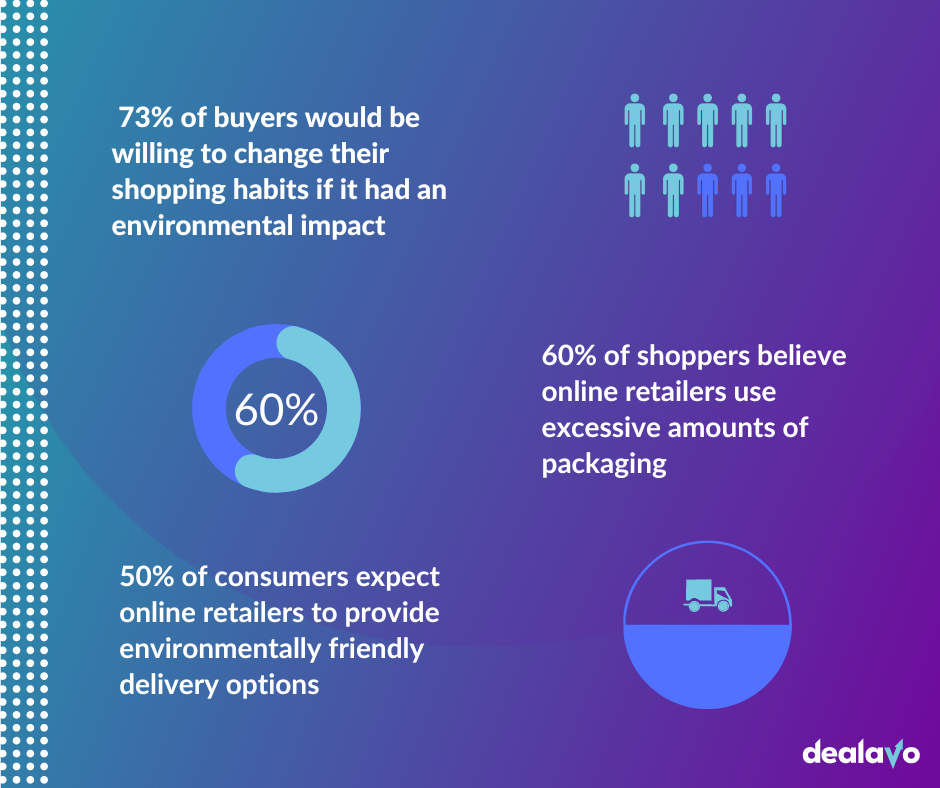Top Ecommerce Trends 2023. What can we expect in the e-commerce industry this year?
- 10 February 2023
As a business involved in the ecommerce industry, it’s important to stay ahead of new trends and technologies that are constantly evolving. Such transformations can enable businesses to increase their reach, grow customer loyalty, enhance customer experience, and boost their bottom line. In this article, we will explore some of the top emerging trends in ecommerce from 2023 and beyond – so buckle up as you get ready for a journey into what’s next!
Ecommerce 2022 summary – what was the e-commerce industry like last year?
Initial reports had predicted positive e-commerce trends for 2022 with a revenue projection of $4299 billion. Unfortunately, unfavorable global factors have caused the company to readjust its predictions, lowering the projected revenue to $3590 billion in 2022. This number is lower than the 2021 e-commerce industry-wide revenues at $3840 billion, indicating a decrease of 6.5% on a y-o-y basis. However, industry analysts have actually highlighted an exciting possibility for 2023 with revenues reaching a whopping $4482 billion, representing an impressive 24.8% growth from 2022 numbers. These compelling figures demonstrate excellent potential for e-commerce companies to bounce back from their 2022 losses and continue to thrive in this digital economy.
To take full advantage of these upcoming possibilities, let’s take a closer look at the emerging e-commerce trends in 2023.
Ecommerce Trends 2023
Ecommerce Trends 2023 – M-commerce
Goodbye e-commerce, welcome m-commerce! Mobile sales are growing year by year. According to Insider Intelligence, in 2023 total revenue from mobile sales is expected to reach 43.4%, which is two percent more than last year.
There are many reasons why consumers are so eager to buy via smartphones. However, it seems that the main motivation is convenience and time-saving. Therefore, it is not surprising that by 2024, mobile sales turnover will amount to $620.97 billion.
Will m-commerce replace traditional e-commerce? It is difficult to unequivocally answer this question. However, in 2023, it is certainly worth developing both sales channels.
Ecommerce Trends 2023 – Social Commerce
Social media platforms are fast becoming an integral part of the e-commerce landscape. Consumers increasingly use social media for discovery and research, which in turn makes social commerce a key element of successful e-commerce strategies. One way to maximize the potential of social commerce is through utilizing influencer marketing – where businesses collaborate with influential figures and celebrities to generate more interest in their products or services.
A large proportion of consumers make purchasing decisions by browsing social media. Some of them make a purchase directly through Instagram, Facebook, or TikTok, e.g. during live streams conducted by sellers. This method typically boosts engagement and conversion rates, simultaneously providing social proof that further attracts users. Companies should not underestimate the potential benefits available through incorporating an influencer strategy into their social commerce campaigns.
Ecommerce Trends 2023 – AI and e-commerce
The e-commerce industry is rapidly evolving due to the prevalence of artificial intelligence (AI). AI has enabled e-commerce stores to automate prices or customer service, leading to an increase in customer satisfaction and profits.
For example, chatbots are increasingly popular in e-commerce stores, with a marked shift towards enhanced personalization in 2023. Chatbots enable e-commerce stores to not only answer customers’ frequently asked questions but also offer products tailored specifically to their needs and solve their problems.
Additionally, augmented reality (AR) enables e-commerce stores to present their products by combining the real and digital worlds. AI is undoubtedly revolutionizing current e-commerce trends and will continue to do so in the future.
Ecommerce Trends 2023 – Cross-border
Cross-border, i.e. international sales, is becoming more and more popular among e-commerce sellers. Due to the limitations of local markets and the difficult economic situation in many countries, sellers often decide to expand abroad.
It is also facilitated by the online sales platforms themselves, offering ready-made courier solutions, product localization, or fulfillment services. Sellers can therefore easily and quickly enter the markets of their choice, without having to have specialist knowledge about them.
Cross-border brings many benefits, such as popularizing the brand, increasing exposure to new groups of recipients, or the possibility of liquidating less popular products. Everything indicates that this trend will continue to develop in 2023.
Ecommerce Trends 2023 – Omnichannel
Omnichannel is considered one of the most important e-commerce trends in 2023. And there are many reasons behind that.
First, modern customers use many sales channels – websites, social media channels, mobile applications, or e-mail boxes. In the end, they choose the channel that best suits their preferences. What they want, however, is a seamless experience.
Secondly, according to Forbes, e-stores that use omnichannel sales retain almost 89% of their customers.
In a nutshell, an effective omnichannel strategy for online stores means:
– wider market range – so important in the current time of decreased purchasing power
– greater customer satisfaction,
– more profit.
Therefore, omnichannel is definitely worth considering when it comes to online sales in 2023.
For more information check our article Best Omnichannel Tools or Your Brand.
Ecommerce Trends 2023 – Subscription Sales
Can the Netflix strategy be used in e-commerce?
Of course!
Currently, we are increasingly using various types of subscriptions. This can be a streaming platform or software (such as Adobe products). However, nothing stands in the way of including cyclical products in the subscription model.
Can subscription sales pay off?
When Dollar Shave Club first introduced subscription sales to its customers in 2012, many thought it was a risky but novel idea. Results? 28 million views on Youtube and purchased by Unilever for USD 1 billion.
The list of products that can be offered as part of subscription sales is really long. First of all, it is worth aiming at articles that we buy cyclically – hygiene products, food, or even underwear.
Ecommerce Trends 2023 – Re-commerce
Recommerce, also known as reverse commerce, is quickly becoming one of the most popular e-commerce trends. It involves all activities related to the sale of pre-owned products, ranging from electronics and clothes to books, jewelry, and furniture.
One of the major advantages re-commerce has over traditional commerce is its sustainability aspect: it’s an excellent way for businesses to show their commitment to creating a better environment by reducing over-consumption. Additionally, recommerce can be leveraged to increase customer loyalty because reusing and consuming responsibly are increasingly popular virtues in today’s world.
Recommerce has seen a dramatic rise in popularity in recent years, due to the increasing presence of e-commerce trends and consumer demand for sustainable practices. By rethinking traditional ways of doing business and using recommerce, companies can dramatically increase their customer loyalty while also establishing themselves as eco-friendly, socially responsible entities that are mindful of environmental impact. In addition, recommerce can also be used to acquire new customers who may otherwise not have heard of the brand. Finally, re-commerce offers valuable economic benefits; thanks to its low costs, businesses can sell products more than once and turn a tidy profit without wasting resources!
Ecommerce Trends 2023 – Sustainability
The e-commerce industry is far from the idea of sustainable development. Yet, can this affect the sales level? It turns out, it can.
According to research by Nielsen – a global leader in data and analytics, 73% of buyers would be willing to change their shopping habits if it had an environmental impact. Furthermore, according to Meta Foresight, American consumers are now 1.3 times more likely to pay more for sustainable and environmentally friendly products.

So, regardless of whether the topic of ecology is close to us or maybe completely distant, we should not ignore these numbers. Being eco can turn out to be quite profitable. The use of more ecological solutions can have a positive impact on customer loyalty, attract new groups of recipients, reduce costs, e.g. of deliveries or packaging, and improve the brand image.
What’s more, e-commerce specialists are increasingly pointing to sustainable development as one of the most important topics in the e-commerce industry. Not without significance is also the policy and regulations of the European Union, which have an increasing impact on online sales. It is enough to mention the Omnibus directive and the revolution it caused.
The possibility of introducing new regulations regarding sustainable development in the e-commerce industry seems to be only a matter of time. It is worth preparing for changes today and at the same time gaining an advantage over the competition by operating in an eco-style.
Ecommerce trends 2023 – conclusion
To sum up, understanding and responding to the latest retail trends is key to staying ahead in today’s competitive ecommerce market. By setting realistic expectations and objectives, paying close attention to competitors’ strategies, and carefully considering what changes will make the best business sense for your brand, you can ensure a successful evolution of your retail sales model. Use Dealavo as an invaluable resource in this pursuit; our platform provides pricing information about millions of products, your competitors, and various markets.
Expand your business, implement omnichannel strategies, and use the full potential of our Machine Learning algorithms.
Don’t wait any longer – stay ahead of the competition today with Dealavo!




